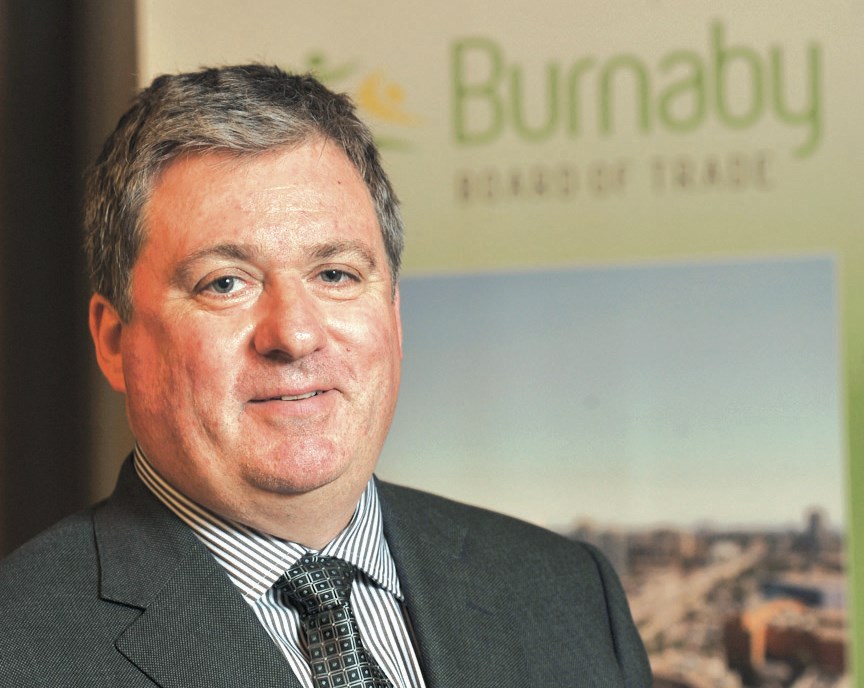Mobility pricing could help clear up traffic congestion in the Lower Mainland but the prices suggested in a recent report are too high, according to the Burnaby Board of Trade.
The final report of the Mobility Pricing Independent Commission presented to TransLink and the Mayors’ Council Thursday said the mobility pricing models it explored during its eight-month study would cost drivers an average of between $3 and $8 per day to get around Metro Vancouver.
“It’s a significant amount, and I think it’s more than we were hoping to see,” BBOT president Paul Holden told the NOW.
The commission had been tasked by TransLink and the Mayors’ Council last July with studying the idea of a regional road usage charging system.
BBOT struck its own task force to look into the issue in February and released a report Thursday, outlining seven principles the local business community thinks should underpin any future mobility pricing model.
Key among them is the idea mobility pricing should be as revenue neutral as possible.
The commission has missed the mark on that point, according to Holden.
“It seems as if it’s a mix of congestion relief and revenue generation, and that’s not what we were hoping for,” he said.
The commission estimates annual net revenue from the two mobility pricing models it studied would range between $1 billion and $1.6 billion – money the commission proposes could pay for transit and transportation improvements – or replace the gas tax in one of the scenarios.
The commission looked at two mobility pricing models, both of which it said could reduce congestion by 20 to 25 per cent.
Congestion-point charges would see drivers charged when they pass specific locations, like bridges, while distance-based charges would see drivers charged for each kilometre they drive, with the price varying depending on where they go and at what time.
The commission estimates congestion-point charges would cost driving households who don’t ever adjust their driving routes and times $5 to $8 per day ($1,800 to $2,700 per year). This option would see the 17-cents-per-litre fuel tax kept in place, to ensure people who don’t cross tolled points still contribute to transportation costs.
Distance-based charges would cost driving households who don’t ever adjust their driving behaviour $3 to $5 per day ($1,000 to $1,700 per year). The 17-cents-per-litre fuel tax could be eliminated under this option.
Holden doesn’t believe prices need to be that high to change driver behaviour.
He points to how drivers adjusted their routes to avoid the relatively low Port Mann bridge toll.
The commission’s report is also a little thin on specific ways the impacts of a future mobility pricing system would be mitigated for companies who have multiple vehicles on the road and have little choice about where and when they have to drive for business.
Besides some shortcomings, however, Holden said the recommendations of the commission generally line up with BBOT’s seven priorities: congestion, cost neutrality, time-of-day pricing, support for business, a regional approach, integration of new technology and accountability.
Holden said mobility pricing has the potential to reduce traffic congestion, which costs the region an estimated $500 million to $1.2 billion by slowing the movement of people and goods and services, and by acting as a drag on economic activity generally, according to BBOT’s report.
But it’s got to be done right, Holden said, so he’s not unhappy TransLink and the Mayors’ Council decided to share the report with the federal and provincial governments and refer it to staff for more research and follow up.
(TransLink has also been asked to continue consulting the public and stakeholders on the proposal.)
“I don’t think anyone’s suggesting that we want to be waiting decades for this,” Holden said, “but I think a reasonable wait period is appropriate to make sure it’s done properly.”
BBOT will also look to be at the table as the process moves forward, according to Holden.
“Whatever mechanism or whatever groups are put together to investigate this further, we certainly want to make sure that we’re a part of it to represent the interests of our business community.”



